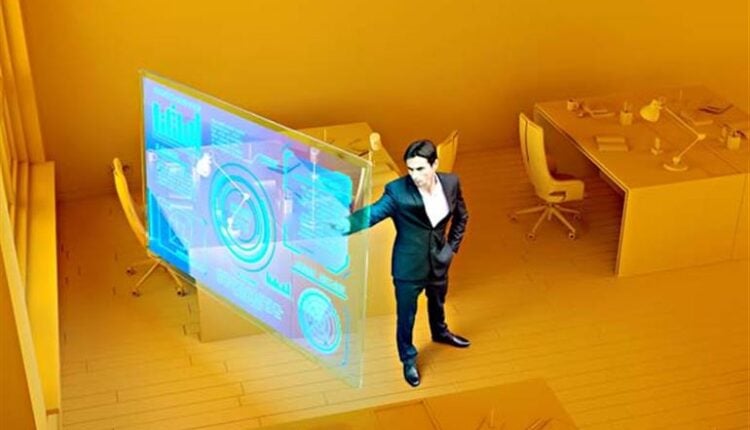As technology keeps improving, the advertising industry always looks for new ways to get people’s attention. One very interesting development in recent times is holographic advertising. By making 3D images that seem to float in the air, holographic advertising gives a very engaging experience and is changing how marketing works. This article looks at what holographic advertising means, the good things about it, where it can be used, and what its future might hold.
What is Holographic Advertising?
Holographic advertising uses holography, which is a method that captures and shows light to make it look like there is a 3D picture. These holograms can be viewed without using special glasses or tools, therefore making them easy to see and interesting as advertisements.
The technology can be from simple projections to complicated interactive screens that reply when viewers move. This gives many creative choices for marketing ideas.
Benefits of Holographic Advertising
1. High Engagement
Holograms look very impressive and can attract people walking by better than normal 2D ads. Because they are new and immersive, holograms stick in people’s minds more, which makes them likely to interact with or remember the ad.
2. Enhanced Storytelling
Holographic displays can make products seem very real, something regular ads cannot do. They let brands tell stories in a lively way by showing their items in 3D and also letting people interact with the features.
3. Increased Brand Awareness
The special and modern look of holograms can make a brand seem very advanced and future-ready. This helps more people know about the brand, and further creates a better bond with consumers who like technology.
4. Interactive Experiences
Modern hologram displays can have interactive parts, letting people interact with ads live. This kind of interaction helps create a stronger bond between the shopper and the company.
Applications of Holographic Advertising
1. Retail Displays
Holograms can be placed in store windows or on product shelves to make displays very attractive. They can show how products work, display items in 3D, and also let people try on clothes or accessories virtually.
2. Events and Exhibitions
Trade shows, conferences, and exhibitions can use holographic advertising to make unforgettable experiences for visitors. Holograms help in giving speeches, showing new products, or making engaging brand spaces.
3. Outdoor Advertising
Billboards and public places can use big holographic displays to catch people’s eyes in busy spots. These ads work very well where many people pass by, attracting onlookers because they look so different and interesting.
4. Entertainment and Media
Holograms can make promotional campaigns for movies, TV shows, as well as video games more exciting by adding 3D trailers or character projections. These lifelike experiences can build excitement and also interest among the fans.
5. Healthcare and Education
Holograms have uses beyond regular advertising; they can teach and also provide information. In healthcare, for example, holograms could show how medical procedures work or explain the advantages of products in a very detailed and interesting way. In education, holographic displays can make learning more interactive and captivating.
The Future of Holographic Advertising
The possibility for holographic advertising is very big, with technology always getting better as well as bringing new chances. As the price of holograms goes down and more people can use them, more companies will indeed start using holograms in their marketing plans.
Future developments may include:
- Augmented Reality (AR) Integration: Combining holograms with AR to create even more immersive experiences.
- Personalized Holograms: Using data to make holographic ads customized to each person’s likes and actions.
- Mobile Holograms: New technology lets people see holographic images on their mobile devices, making it possible to interact with 3D advertisements anywhere they go.
Conclusion

Holographic advertising indeed is a big step ahead for how brands can connect with people. By giving high engagement, better storytelling, as well as fun interactive experiences, holograms become a strong tool for marketers who want to be different in the busy world of ads. As technology keeps growing, using holography in advertising will probably become more common. This will further push new ideas and change how marketing looks in the future.
Using holographic advertising today can put brands ahead in this exciting new technology trend, thus making sure they grab the interest and loyalty of today’s customers.
Frequently Asked Questions (FAQs)
1. What is holographic advertising and how does it work?
Answer: Holographic ads use holography to create 3D images that appear to float in mid-air. These holograms are created by projecting light patterns that can be viewed without special glasses, thus making them visually striking and accessible. The technology can range from simple static images to complex interactive displays.
2. What are the main benefits of using holographic ads?
Answer: The main benefits include high engagement due to their eye-catching nature, enhanced storytelling by allowing products to be displayed in 3D, increased brand awareness through their innovative appeal, and the ability to create interactive experiences that deepen consumer connection with the brand.
3. In which industries is holographic ads most commonly used?
Answer: Holographic ads are commonly used in retail for creating dynamic product displays, at events and exhibitions to create memorable experiences, and also in outdoor advertising to attract attention in public spaces, and in the entertainment and media industries to promote movies, TV shows, and video games with immersive trailers.
4. What is the future potential of holographic advertising?
Answer: The future of holographic advertising includes potential developments such as integration with augmented reality (AR) to create more immersive experiences, personalized holograms tailored to individual consumer preferences, and mobile holograms that allow consumers to interact with 3D ads on their mobile devices. As technology advances and becomes more affordable, holographic advertising will indeed become more widespread and innovative.


